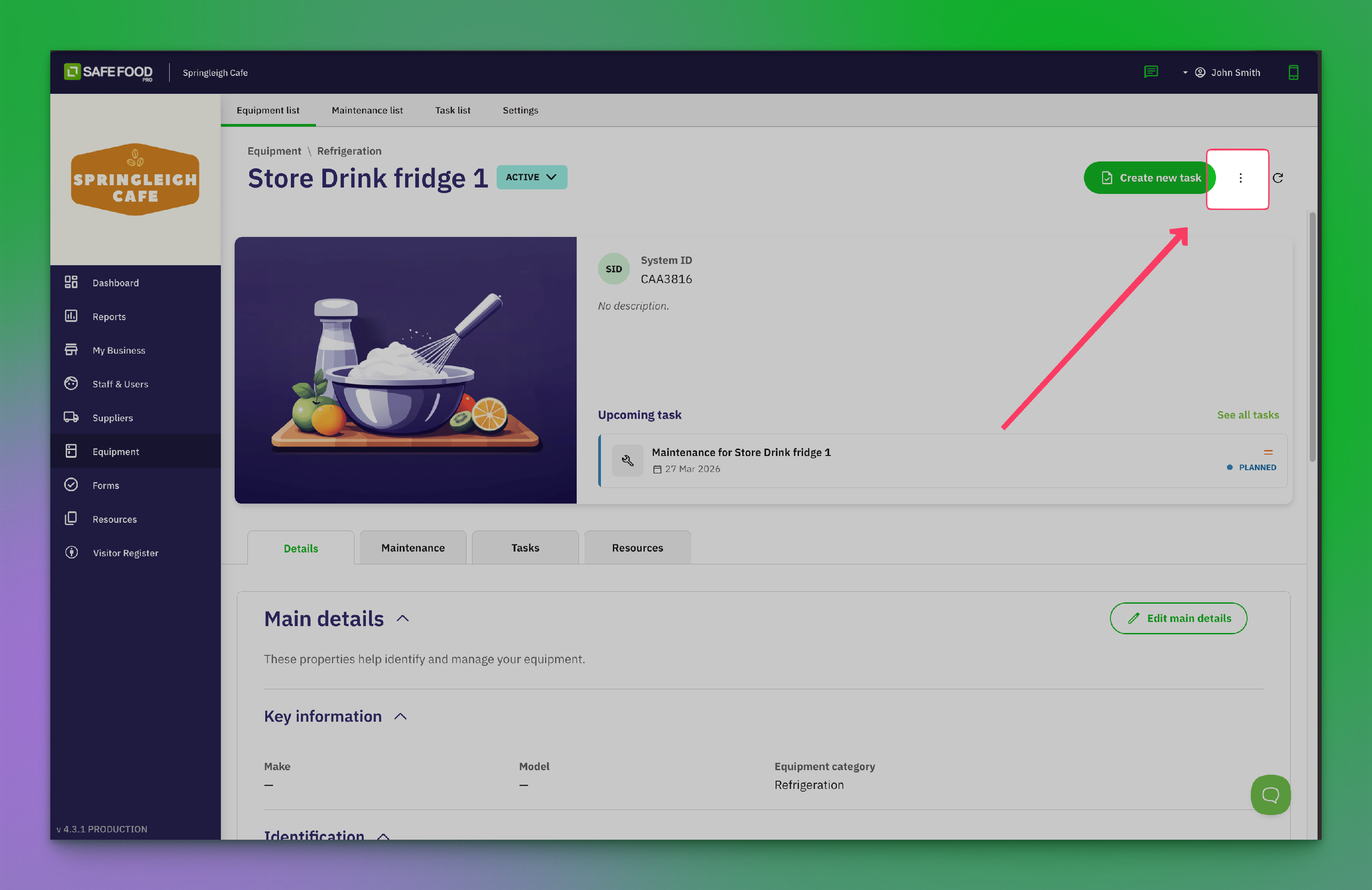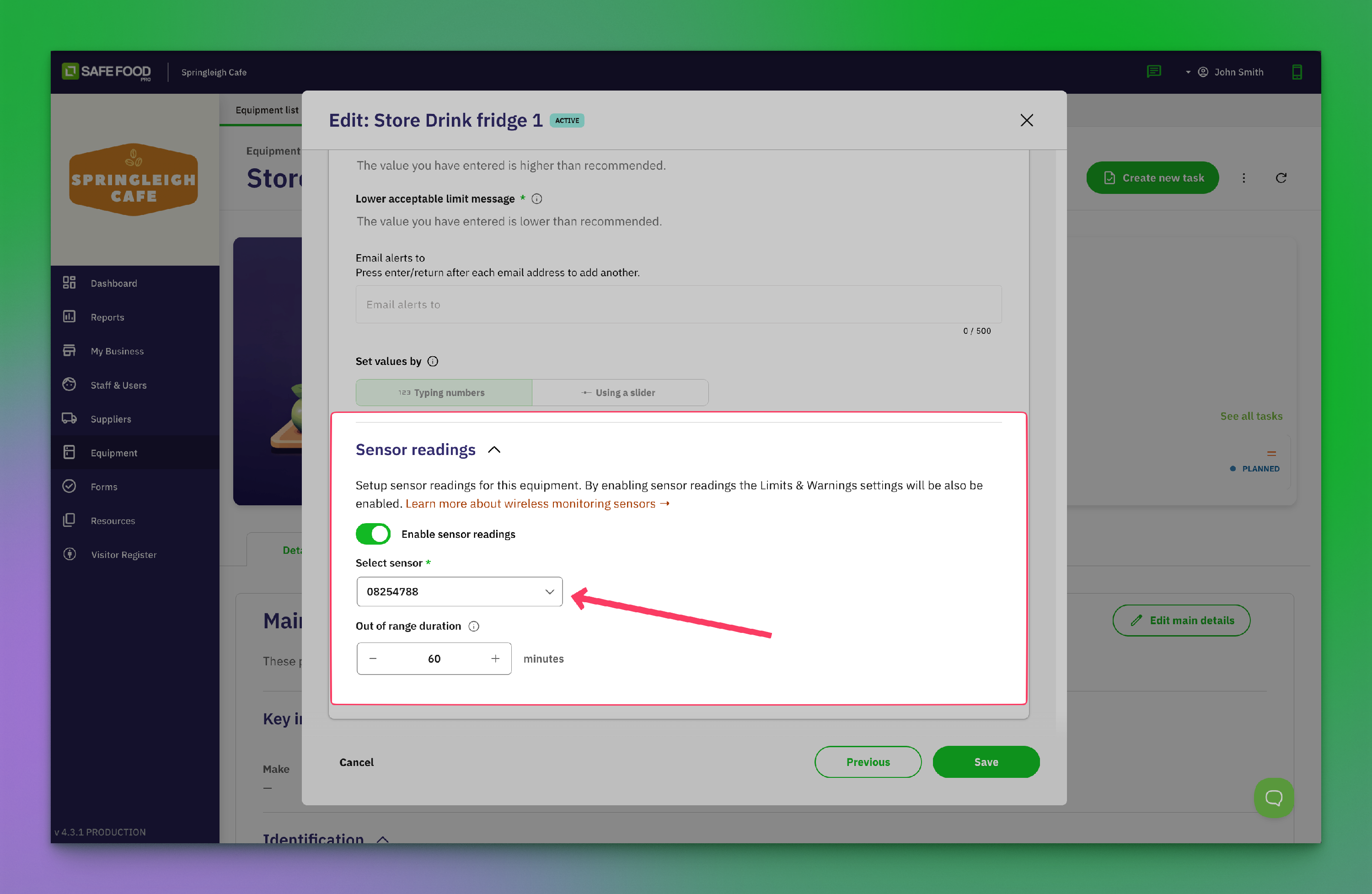Setting Up Your Temperature Sensors
By using Safe Food Pro’s Temperature Sensors, you can record and display your essential temperature logs automatically!
Safe Food Pro Temperature Sensors record and display fridge, freezer, and hot holding temperatures on your dashboard. The sensors operate between -55°C and +125°C.
In this Article:
- Installing the Sensor Hub (WH-2)
- Installing the LTE/4G Sensor Hub (WH-3)
- Allocating your Sensors (mobile)
- Allocating your Sensors
- Viewing Your Readings
What you’ll need:
- Hub - Make sure you place this in an area free of obstructions so you can get the best possible sensor readings.
- Sensor(s) - This goes in your Fridge/Freezer. When you set up the sensors, mount them away from the door and high up so the signal is not being blocked by stock on shelves.
Installing the Sensor Hub:
On your Hub, there are three lights. Each of these lights will give you an indicator of the status of your hub.
- Power Light | Red -- If there is power, this will be Solid Red
- Network Light | Green -- when connected to the network, it will blink every few seconds
- RF Light | Blue -- and will shine each time a reading is received by the hub

To set up your Hub:
- Find a place by your internet router that's free of obstructions, and keep your sensors next to the Hub while you are setting up
- Screw on RF aerial to your Hub and the sensor aerials to your Sensors
- Connect the power supply to your Hub and turn the Hub on. This makes the power light go Red

- Take out the LAN cable. Connect this to the Hub (in the LAN port) and your Internet Router. This should make the net light flash green every few seconds. The RF light will flash blue when a sensors sends a reading every few minutes.

Installing the 4G/LTE Sensor Hub (WH-3):
This Hub allows your hub to receive readings from your sensors wirelessly, as opposed to needing to be connected to a Router via LAN cable. It's recommended if your hub is operating away from your Router or network room. To get it running, you just need to ensure that you have set up your SIM card on a pre-paid plan.
To set up your Monitor Pro 4G/LTE hub (WH-3):
- Screw on RF & 4G aerials supplied in the box to your Hub, they are specific for RF & 4G.
Connect the power supply to your Hub and turn the Hub on. This makes the power light go Red.

- Ensure that you have placed the hub is a spot that has clearance! (like the top of a shelf)
- This makes sure that your hub will be able to receive readings
- Put your SIM Card in the SIM Card tray on the back of the Hub
- If you want to use your SIM with the device please contact support for more information. Currently, the devices are SIM/IMEI locked to the Telstra Network.
A Note on SIM cards:
Our 4G hub does not come with a SIM in the box. We suggest purchasing a Pre-Paid SIM on the Telstra network with 5mb of Data per month to get started.

Here's a direct link to the Telstra Pre-Paid SIM store.
You will need to register this SIM and insert it into the hub before you can begin receiving readings.
Step 3: Connect Your Sensor to Safe Food Pro
After receiving your sensors, you need to add the sensor to your account. This article shows you how.
This is possible for Tablet Manager, Managers, Admins and Internal Auditors
To connect your Monitor Pro Sensor, follow these steps:
- Log into the Mobile App.
- Tap the Menu icon in the top left corner.
- Select Equipment from the menu.
- Tap the Equipment to open its profile (or use the Plus icon to add a new item)
- Select Add Sensor.
Sensor Onboarding
- Follow the on-screen prompts.
- Choose Scan Barcode.
This will open your camera. Scan the Barcode on your Monitor Pro Hardware.
If the QR Code scan fails:
- Tap Skip to manual input.
- Enter the ID from your Sensor manually.

Note: Monitor Pro hardware do not require a Security Code. You can skip this field.
If a sensor has already been allocated to an account, it cannot be assigned to another account. Contact support@safefoodpro.com for re-assignment.
To Assign Sensors to other pieces of equipment from the Admin Console
- Log into the Admin Console
- Navigate to the Equipment page
- Click the item you want to assign the sensor to
Click the three dots in the top right-hand corner

- Select "Edit Technical Details"
- Scroll to the Sensor Readings section
Click the Sensor ID section and select the Sensor ID.

Viewing Your Readings:
- Go to your Safe Food Pro Dashboard
- Check your sensors are sending readings, this can take up to 15 minutes for the readings to appear on the Dashboard Graph
- Once all your sensors are in place, put them in the designated fridge/freezer.
- Continue to keep an eye on your sensors once you've moved them into the equipment to make sure they are still sending readings

Reporting on your Readings
To get a better view of your sensor readings simply:
- Go to your Dashboard
- Click the Sensor ID on the right of the Temperature Sensing Graph
- This will open a pop-up of the temperature reading for that sensor
Then click and drag on the field below to zoom into that date


Note: You must set up your Temperature Sensor Notifications
Printing Temperature Sensor Readings
To view the readings:
- Go to the Reports page
- Click on the "Sensor Data" tab.
- In the top right corner, you can choose the date range for which you want to view the data.
Once you have selected the date range, you will see a graph displaying the data for the selected period. To print the readings, click on the print icon.







